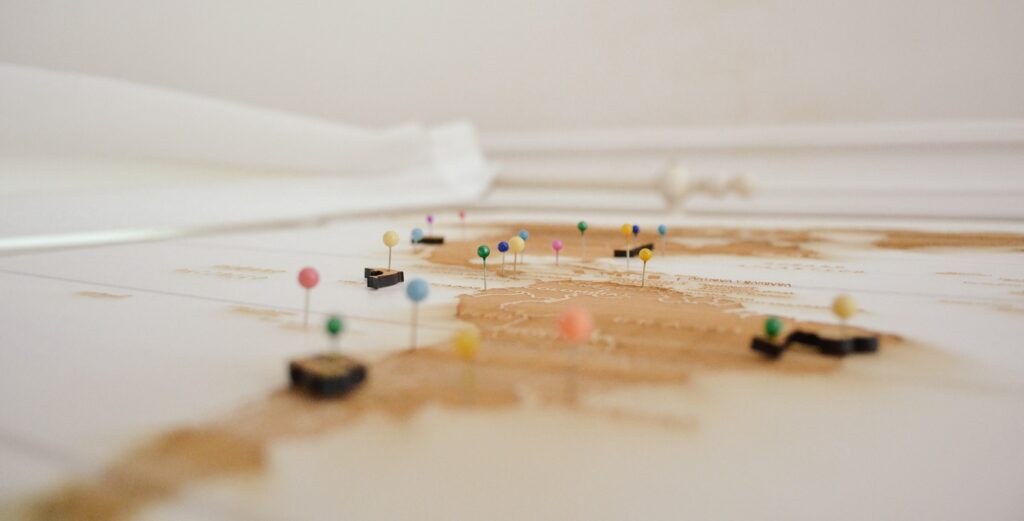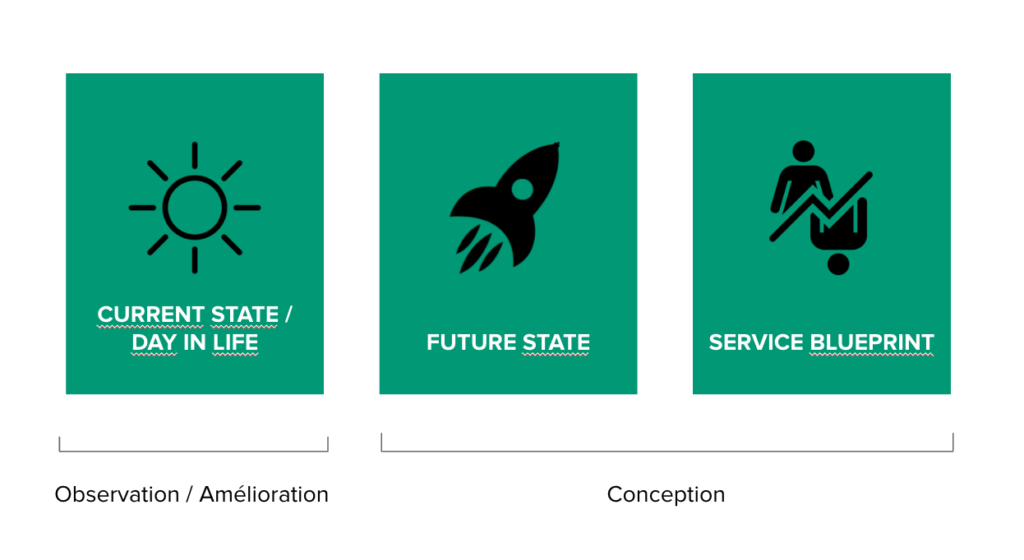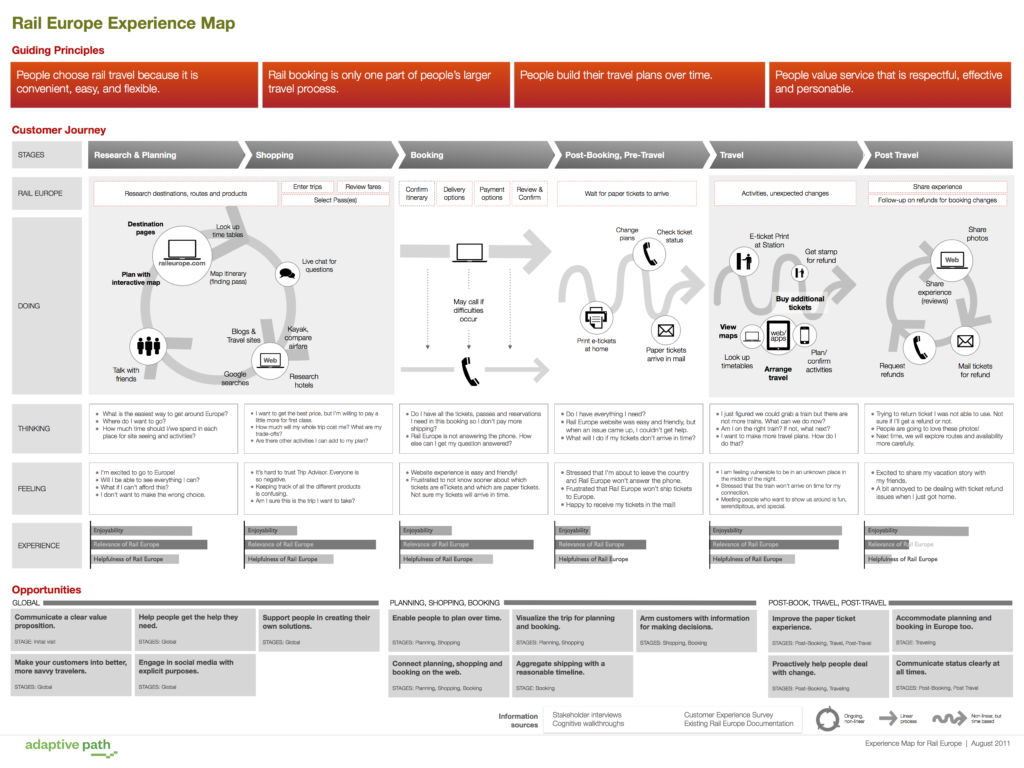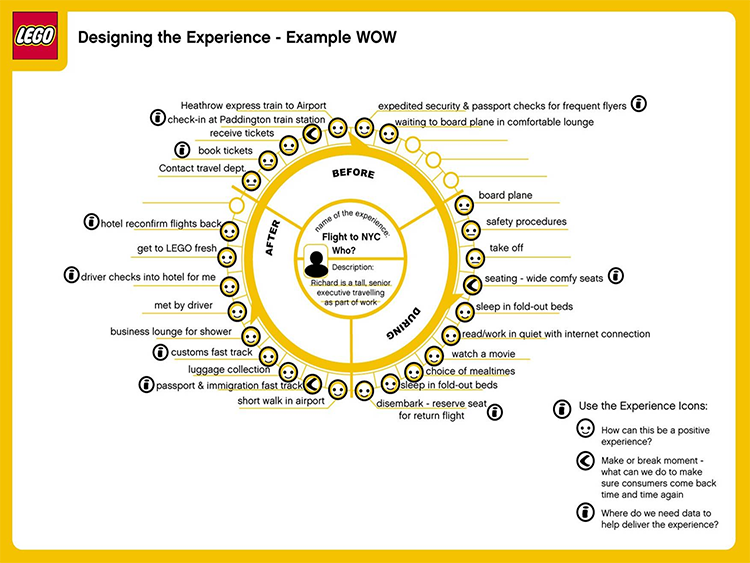IDENTIFY THE FACTS THOUGHTS AND EMOTIONS

A Experience Map helps to map a user's experience, identify obstacles and problems that the customer encounters with a product or service as well as opportunities for improvement and innovation. It's a complete view of the experience, with multiple touchpoints and interactions.
It is a method complementary to that of people, to which it brings a dynamic dimension.
Experience Maps are a way to bring them to life, engage them in experiential action
(Pruitt & Adlin, 2005).
#1 Do research
We can never repeat it enough but you need real data to be able to map your user experience, otherwise it is pointless. In general, we create a map experience for a persona and it is for a limited period of time.
At the end of the exploration phase, the team must be able to identify:
- what motivates users
- what font users
- what pensent users
- what feeling users
#2 Define the course
There are different experience map formats, it all depends on the company's strategic vision! If you want to improve or create a new service the format is a little different.

The formats “Current state” et “Day in life” are mainly used for observation and to identify the difficulties encountered by users and thus improve the experience. While the “Future state” format is different: we imagine how the user could use a non-existent service or product but still with real data. With regard to "blueprint service” it takes into consideration theclient experience and business experience.
Once you have your data and your format then you can invite the project stakeholders to define the experience map together during a workshop. Stakeholder engagement helps build empathy among the people who can impact the user experience the most.
#3 Tell a story
There are two representation formats: linear or wheel.
Le linear format highlights a user's points of contact with a service or product. This format is very useful for a cross-channel experience in order to show the different points of contact of a user (smartphone, tablet, desktop, store, friends, application, website, chat, search engine, etc.)

Le wheel format will highlight the actions performed by the user.

The visual representation is very important, it helps to convey the message. Need to know what message you want to get across for a quick read? In 5 mins or 15 mins? The people who will read this document will have more or less time to devote to reading it and yet it is often the people who are the most able to make decisions to impact the user experience.
#4 Use your Experience Map
You should know that an Experience Map is like a persona, it's not definitive, it can be constantly adjusted. This is why it is important to communicate this document to all departments, it is necessary to capitalize on the research work that has been done.
Your Experience Map is a trigger, not a conclusion!
TAKE AWAY
The Experience Map is a real value proposition that allows you to ccreate a shared frame of reference around user experience. The objective is to cbuild organizational knowledge behaviors and needs of users through the different channels. And thus promote the organizational evolution towards a user-centric approach.
UX-Republic
ACCESSIBLE UX/UI DESIGN # Paris
SMILE Paris
163 quay of Doctor Dervaux 92600 Asnières-sur-Seine
AWARENESS OF DIGITAL ECO-DESIGN # Belgium
UX-REPUBLIC Belgium
12 avenue de Broqueville - 1150 Woluwe-Saint-Pierre
STORYTELLING: THE ART OF CONVINCING # Paris
SMILE Paris
163 quay of Doctor Dervaux 92600 Asnières-sur-Seine
UX/UI ECO-DESIGN # Paris
SMILE Paris
163 quay of Doctor Dervaux 92600 Asnières-sur-Seine
DESIGN THINKING: CREATING INNOVATION # Belgium
UX-REPUBLIC Belgium
12 avenue de Broqueville - 1150 Woluwe-Saint-Pierre
MANAGING AND MEASURING UX # Paris
SMILE Paris
163 quay of Doctor Dervaux 92600 Asnières-sur-Seine
DESIGN SPRINT: INITIATION & FACILITATION # Paris
SMILE Paris
163 quay of Doctor Dervaux 92600 Asnières-sur-Seine
UX-DESIGN: THE FUNDAMENTALS # Belgium
UX-REPUBLIC Belgium
12 avenue de Broqueville - 1150 Woluwe-Saint-Pierre











